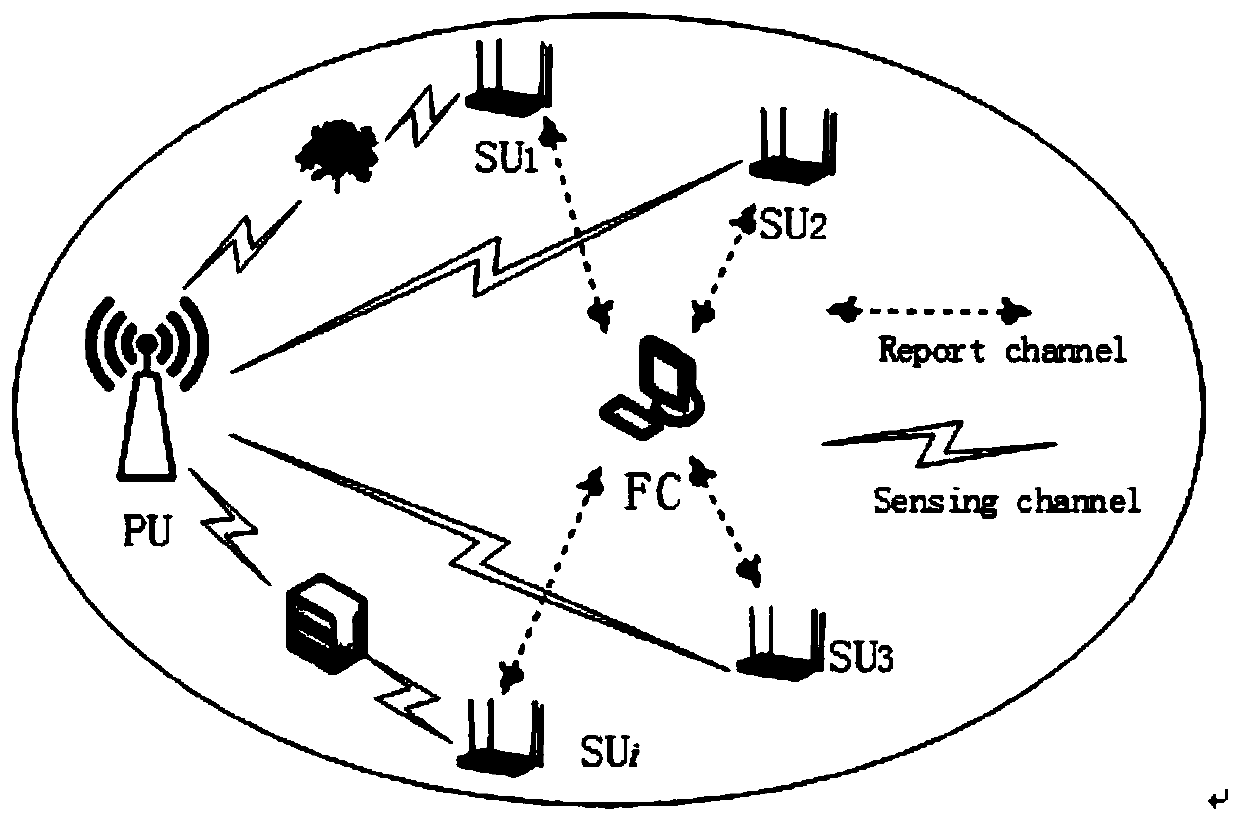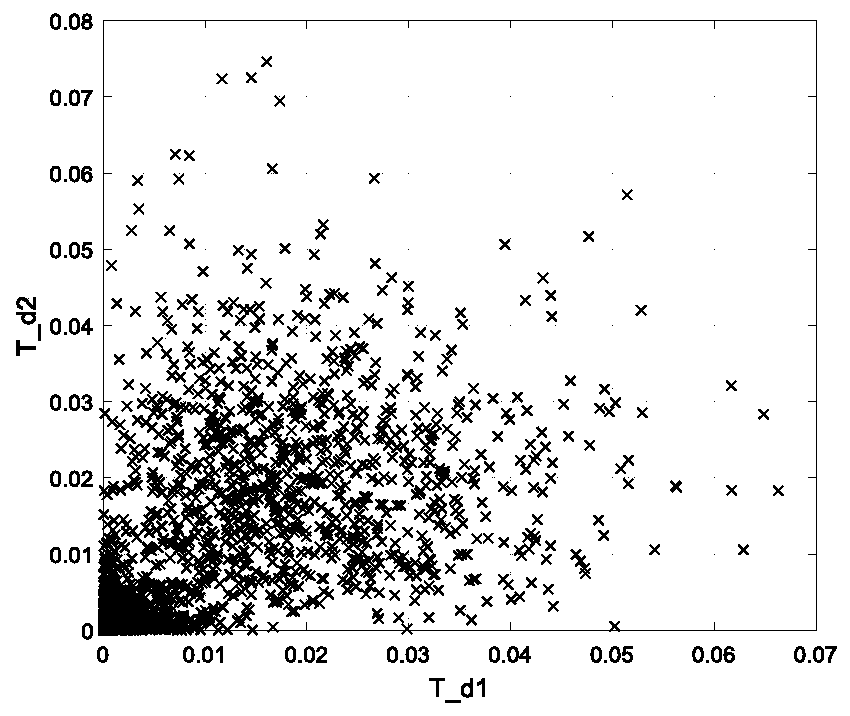Multi-antenna cooperative spectrum sensing method based on information geometry and differential evolution clustering algorithm
A technology of cooperative spectrum sensing and information geometry, which is applied in the field of multi-antenna cooperative spectrum sensing based on information geometry and differential evolution clustering algorithm, and can solve the problems of complex and inaccurate threshold derivation and information loss.
- Summary
- Abstract
- Description
- Claims
- Application Information
AI Technical Summary
Problems solved by technology
Method used
Image
Examples
Embodiment 1
[0078] In actual wireless communication, problems such as multipath attenuation and shadow attenuation usually exist, and it is difficult for a single secondary user to make an accurate judgment on whether the primary user is using the licensed spectrum. Therefore, in order to combat and reduce the impact of channel attenuation on spectrum sensing performance, this embodiment is based on a multi-antenna cooperative spectrum sensing system model, such as figure 1 As shown, multiple users and multiple antennas are used for cooperative spectrum sensing technology. Specifically, this embodiment provides a multi-antenna cooperative spectrum sensing method (PIDMSS) based on information geometry and differential evolution clustering algorithm, such as figure 2 As shown, it includes the following steps:
[0079] S1: According to figure 1 , assuming that there is only one primary user, M cognitive users and one fusion center in the cognitive radio network, and each secondary user pa...
PUM
 Login to View More
Login to View More Abstract
Description
Claims
Application Information
 Login to View More
Login to View More - R&D
- Intellectual Property
- Life Sciences
- Materials
- Tech Scout
- Unparalleled Data Quality
- Higher Quality Content
- 60% Fewer Hallucinations
Browse by: Latest US Patents, China's latest patents, Technical Efficacy Thesaurus, Application Domain, Technology Topic, Popular Technical Reports.
© 2025 PatSnap. All rights reserved.Legal|Privacy policy|Modern Slavery Act Transparency Statement|Sitemap|About US| Contact US: help@patsnap.com



